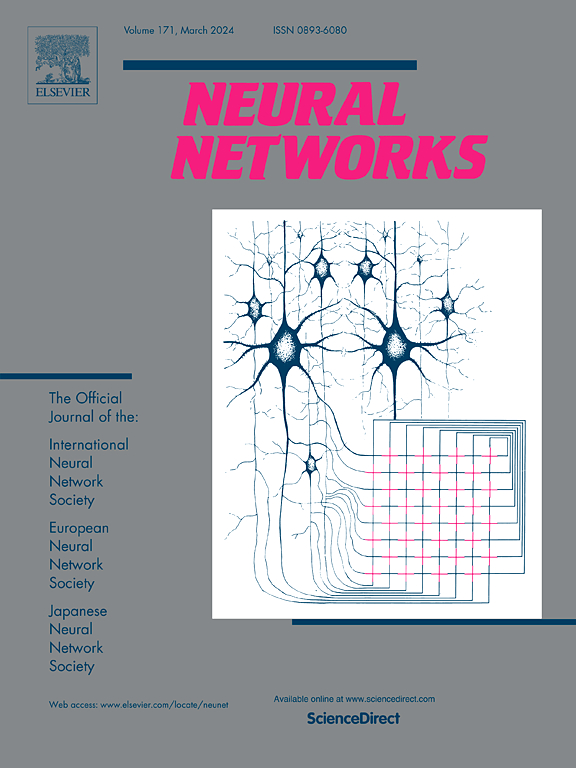用于弱监督时间动作定位的多层次语义和自适应动作性学习
IF 6
1区 计算机科学
Q1 COMPUTER SCIENCE, ARTIFICIAL INTELLIGENCE
引用次数: 0
摘要
弱监督时态动作定位的目的是在仅有视频级标签的未剪辑视频中识别和定位动作实例。通常情况下,大多数方法都是基于多实例学习框架,使用顶 K 策略选择突出片段来代表整个视频。因此,无法学习细粒度视频信息,导致动作分类和定位性能不佳。本文提出了一种多层次语义和自适应动作性学习网络(SAL),主要由多层次语义学习(MSL)分支和自适应动作性学习(AAL)分支组成。MSL 分支引入了二阶视频语义,可以捕捉视频中的细粒度信息,提高视频级分类性能。此外,我们还将二阶语义传播到动作片段,以增强不同动作之间的差异。AAL 分支使用伪标签来学习与类别无关的动作信息。它引入了视频片段混合策略来增强前景泛化能力,并添加了自适应动作性掩码来平衡伪标签的质量和数量,从而提高了训练的稳定性。大量实验表明,SAL 在三个基准测试中取得了最先进的结果。代码:https://github.com/lizhilin-ustc/SAL本文章由计算机程序翻译,如有差异,请以英文原文为准。
Multilevel semantic and adaptive actionness learning for weakly supervised temporal action localization
Weakly supervised temporal action localization aims to identify and localize action instances in untrimmed videos with only video-level labels. Typically, most methods are based on a multiple instance learning framework that uses a top- strategy to select salient segments to represent the entire video. Therefore fine-grained video information cannot be learned, resulting in poor action classification and localization performance. In this paper, we propose a Multilevel Semantic and Adaptive Actionness Learning Network (SAL), which is mainly composed of multilevel semantic learning (MSL) branch and adaptive actionness learning (AAL) branch. The MSL branch introduces second-order video semantics, which can capture fine-grained information in videos and improve video-level classification performance. Furthermore, we propagate second-order semantics to action segments to enhance the difference between different actions. The AAL branch uses pseudo labels to learn class-agnostic action information. It introduces a video segments mix-up strategy to enhance foreground generalization ability and adds an adaptive actionness mask to balance the quality and quantity of pseudo labels, thereby improving the stability of training. Extensive experiments show that SAL achieves state-of-the-art results on three benchmarks. Code: https://github.com/lizhilin-ustc/SAL
求助全文
通过发布文献求助,成功后即可免费获取论文全文。
去求助
来源期刊

Neural Networks
工程技术-计算机:人工智能
CiteScore
13.90
自引率
7.70%
发文量
425
审稿时长
67 days
期刊介绍:
Neural Networks is a platform that aims to foster an international community of scholars and practitioners interested in neural networks, deep learning, and other approaches to artificial intelligence and machine learning. Our journal invites submissions covering various aspects of neural networks research, from computational neuroscience and cognitive modeling to mathematical analyses and engineering applications. By providing a forum for interdisciplinary discussions between biology and technology, we aim to encourage the development of biologically-inspired artificial intelligence.
 求助内容:
求助内容: 应助结果提醒方式:
应助结果提醒方式:


